The second of the Empire flying boats for TEAL was launched as G-AFCZ c/n S.885 for Imperial Airways.
Intended to be named ‘Canterbury’ and registered ZK-AMB, it served Imperials as ‘Clare’ from April 1939.
By the time arrangements had been made for this aircraft to be delivered to New Zealand, war had broken out and aircraft were scarce. G-AFCZ was never delivered to TEAL, continued in service with Imperial Airways and later BOAC, and was finally destroyed by fire in September 1942.
The third S.30 Empire boat was c/n S.884 launched as G-AFCY ‘Captain Cook’ and first flown on 20th April 1939.
This aircraft also entered commercial service with Imperial Airways from July 1939, and there was a very real possibility that it would also never arrive in New Zealand. Given the impossibility of starting an airline that only had one aircraft, high level political pressure was brought to bear and this boat finally departed the UK for delivery to New Zealand on 15th March 1940 as ZK-AMC 'Awarua'.
Captain for the delivery flight was Oscar Garden, and Mary Garden, his daughter writes:
"He left Hythe with ZK-AMC on the March 15 1940 and as well as refuelling stops every 800-965km, there were 10 night stops at Marseilles, Brindisi, Haifa, Basra, Karachi, Calcutta, Singapore, Darwin, Brisbane arriving in Sydney on March 28.
Due to the funeral of New Zealand’s Prime Minister Savage the 1931km flight across the Tasman Sea was delayed a few days until April 3.
With Awarua’s arrival, TEAL could now be formally established. On 26 April 1940, it was registered in Wellington as a limited liability company jointly owned between the New Zealand Government (20%), Union Airways NZ (19%), BOAC (38%) and Qantas Empire Airways (23%). The deputy Chairman A.E. Rudder regarded a company run by three other airlines on behalf of three governments as an administrative nightmare."
As with ZK-AMA, ZK-AMC was painted up with wartime ID markings, and flew maritime surveillance flights during the early war years.
ZK-AMC alighting in Auckland harbour early 1940s. The wartime ID stripes under the registration can clearly be seen, but no flag has been applied to the front fuselage at this time. At the the mooring
At the the mooring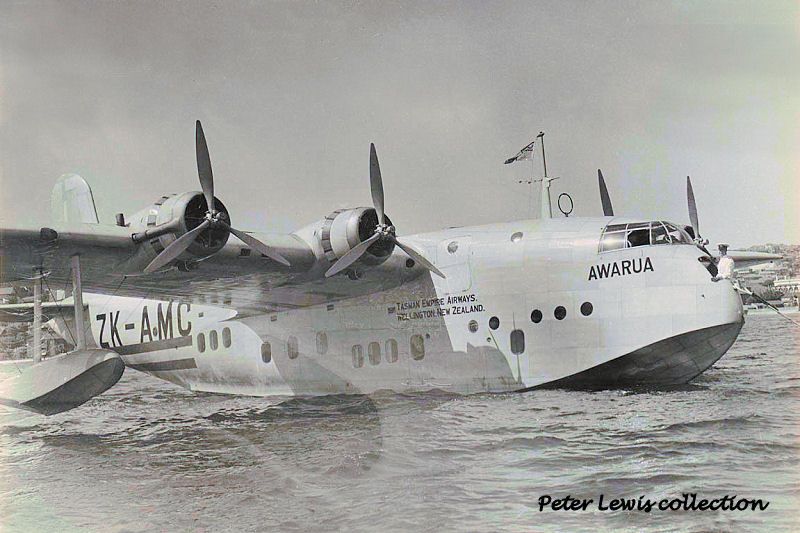 ZK-AMC (nearest the camera) and ZK-AMA moored out at Mechanics Bay in wartime colours
ZK-AMC (nearest the camera) and ZK-AMA moored out at Mechanics Bay in wartime colours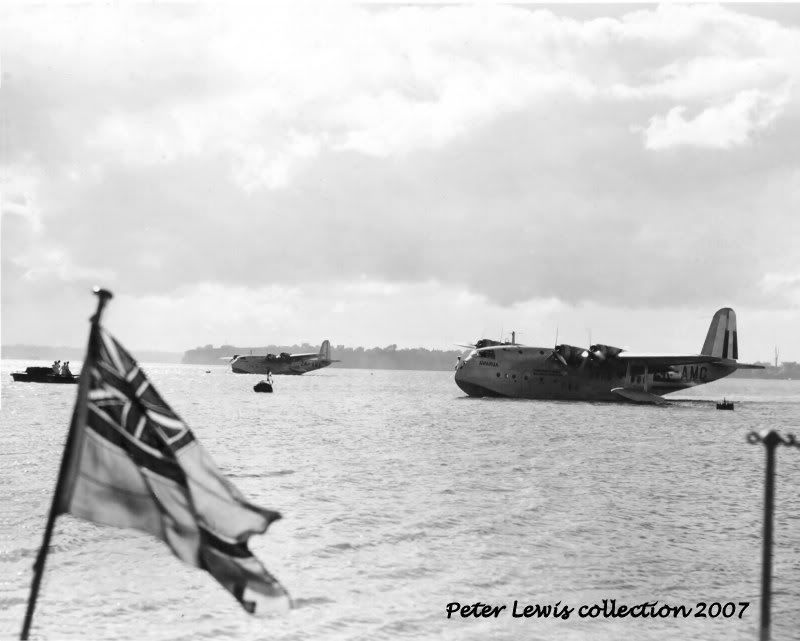 Moored at the Hobsonville buoy
Moored at the Hobsonville buoy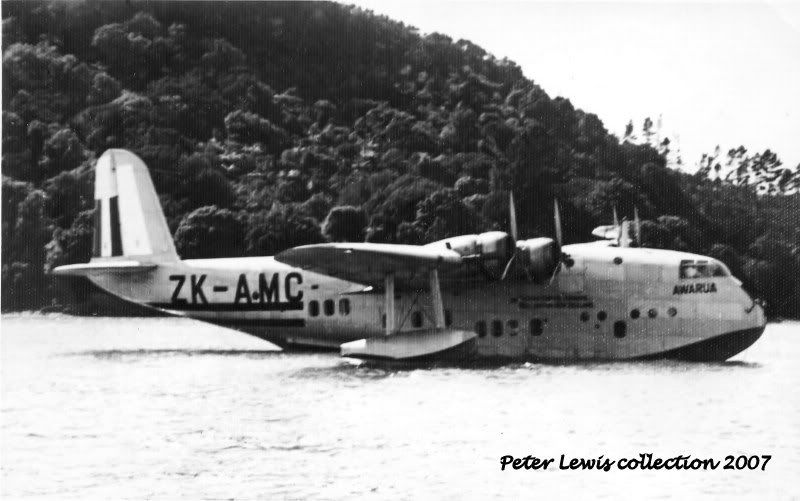
As the trans-Tasman service settled down, flights were scheduled three times a week.
More comment from Mary Garden about her father’s experiences with the Empire boats on the Tasman service:
"In the long run we had a lot of trouble with them—ignition trouble, oil cooler trouble – they couldn’t cope with some of the temperatures we struck there, especially at the Australian end in summer, and mostly ignition trouble, and in fact the first few years we had a lot of headaches and some pretty good frights when the engine slows down across the Tasman. This was a kind of guinea pig stuff. It took over three years to get the bugs out and the worst part of all, especially on this over-water job, for which this kind of boat was not really originally designed, was that we couldn’t turn off the propellers. So when we had to shut an engine down, halfway across the Tasman, it wasn’t a bit funny, you know, with the load we were carrying. We had very little margin. In fact, once or twice I gave up the ghost, but we were lucky enough, got out of it.
The average for both east and west crossings was 8 hours and 45 minutes. But the shortest flight was 5 hours 50. “We kept chipping it off, we got more used to conditions and perhaps striking westerly winds. I was a great one for getting above the weather if I could and catching all the tail winds. And I also had the longest flight – that was a real horror trip, 12 hours 8 minutes, because there wasn’t much petrol left.
When we started some of the conditions were a long way from what they are today. I remember there was no radio operating from Norfolk Island to get a cross radio check, and Lord Howe wasn’t up to scratch. In fact the radio operators were good, they were pin pointers, but if you were 400 miles south of Norfolk they couldn’t pinpoint you to within a hundred miles to be sure …the weather was a big factor, the worst part was these machines – you couldn’t get up above the weather if you were heading into a westerly wind. We didn’t have the range. Nine times out of ten we used to strike weather trouble about 300 miles from the Australian coast, sometimes it almost looked like line squall stuff. I’ve had the daylights frightened out of me. Get down below them and you’d find yourself in amongst some waterspouts, and all sorts of capers. And I remember one trip I was on, I told the steward to tell the passengers ‘Tell them to have a look down below at the white caps on the water and we were going like a bat out of hell, perhaps 200 miles an hour at 10,000 feet, and you’d look down, and there was a wind just about as strong going the other way on the surface. You just couldn’t believe it.
Another thing I remember the heating services were a long long way from being perfect, half the time, when you wanted them in winter the damned thing didn’t work. I know the crews didn’t get much, if there was any heat going the passenger compartments had first call on them, and, me, liking to get out of the weather, and give passengers a smooth trip if I could, maybe 10,000 feet or 12,000, but it used to get pretty damned cold, when you’d been up there a few hours. We used to leave early in the morning from Sydney, in the dark. I can remember lots of cases where I’ve said to the steward ‘Listen, you’d better go and do the usual with the passengers,’ and that was to go down and tell them that we’re flying in very comfortable conditions, you know, smooth air, at 10 or 12,000 feet or whatever it was, but it’s getting cold. ‘If we go down to get warm to 2 or 3 thousand feet you’re going to have a pretty rough trip. Which would you prefer?’ Will we stay where we are and be a bit cold or do you want to go down? Always, of course, they’d say ‘Stay up’, you see. They used to laugh at me but after about 1943 they got the heating problems straightened out, didn’t have to bother. Another thing I can remember, it used to be a real pain in the neck, every passenger in the early days of the Tasman, they had a signed certificate to say they’d flown the Tasman, and the poor old captain had to sign every one of these blessed tickets. I signed thousands of them. And there must be a lot of them around, you know, souvenirs.
I remember, one of my early trips in the first year – I was going to Sydney and had aboard three chiefs of Defence – the Navy, Army and Air Force – and we got near this awful frontal condition off Sydney and I thought ‘Oh, I’ll give these blokes a fright, I’ll see if I can carve my way through it at about 10,000 feet,’ and there were great huge cumulus clouds – they must have been up to about 40 by the look of them, and I got inside this – it was like going into a great big cabin, a cave. Ooh ...oh boy oh boy! Lightning started, sheet lightning, and then we struck hail and these blokes were up front, you see, I got them up to have a look and I think they were getting lighter by the minute. So, actually, I was getting lighter too, so I turned tail and went down, got right down near the water and we got just about as bad a fright then. That’s when we got real line squall effects stuff. And I thought afterwards, well how damn silly, the three chiefs of the defence forces, the whole lot could have been bumped off in one crack."
Lightning strikes when the flying boats flew into thunderstorms were another spectacular accompaniment to some flights. The loud explosion and blinding flash of a strike were frightening but usually did no great harm. The metal hull enclosing the crew and passengers acted as a Faraday Cage, protecting them from any ill effects. But when lightning threatened it was essential to earth everything and wind in the 200-ft-long trailing aerial or the consequences could be unpleasant, as Oscar Garden remembers:
"We were about 400 miles from Sydney and struck one of those pretty frightening fronts they get there sometimes, with lightning flashes everywhere. So I said to the radio operator, Doug Reid, behind me, ‘You’d better earth everything, Doug.’ I automatically assumed he would wind in the aerial. The next thing, we got into this cloud mass, there was an almighty flash and we were struck by lightning all right. I said to Doug, ‘Did you earth the aerial?’ He said, ‘No, I didn’t wind the aerial in’. I said, ‘You do it automatically!’ He said, ‘I didn’t know’! It was a new one on him. The lightning went up the back of my seat and burnt all the hair off the back of my head. The first officer, Chris Griffiths doused ‘the boss’ with a fire extinguisher.) The back of the seat itself was scorched and, boy, Doug Reid made sure next time he was near lightning he had the aerial in. We got to Sydney all right, but it took a few weeks for my hair to grow …"
He grew to hate flying them over the Tasman Sea because they were never built for such crossings, and they had lots of hair-rising times he said. Also, long (up to 10 hours) and boring flights which he had to make sometimes two or three times a week. Ah, but they were allowed to smoke back then!"
ZK-AMC in postwar colours, mid-1940s
In the braby at TEALs Mechanics Bay terminall
 Moored at Mechanics Bay, with Sandringham ZK-AMB in the foreground
Moored at Mechanics Bay, with Sandringham ZK-AMB in the foreground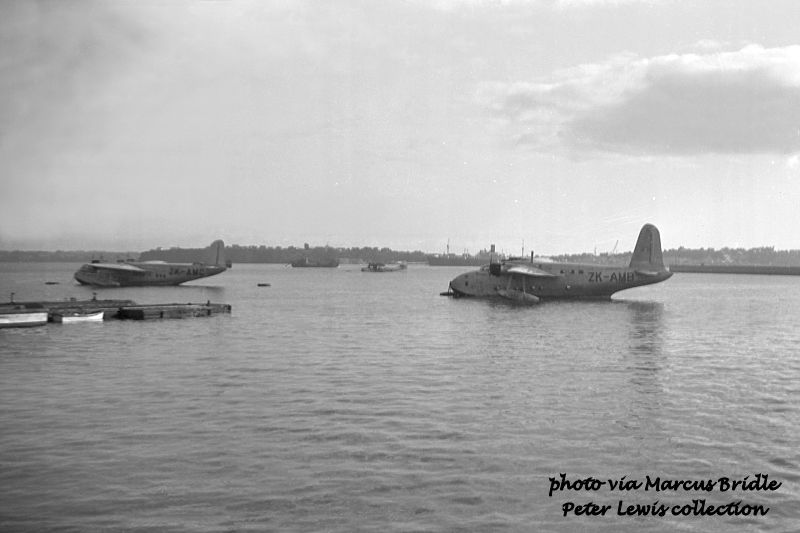
The final flight for ZK-AMC was Sydney – Auckland 12th June 1947, after which she had competed 8740hrs. The aircraft was then taken to Hobsonville to be stored. Unlike ZK-AMA, all engines and other equipment were removed at that time.
In storage at Hobsonville, 1947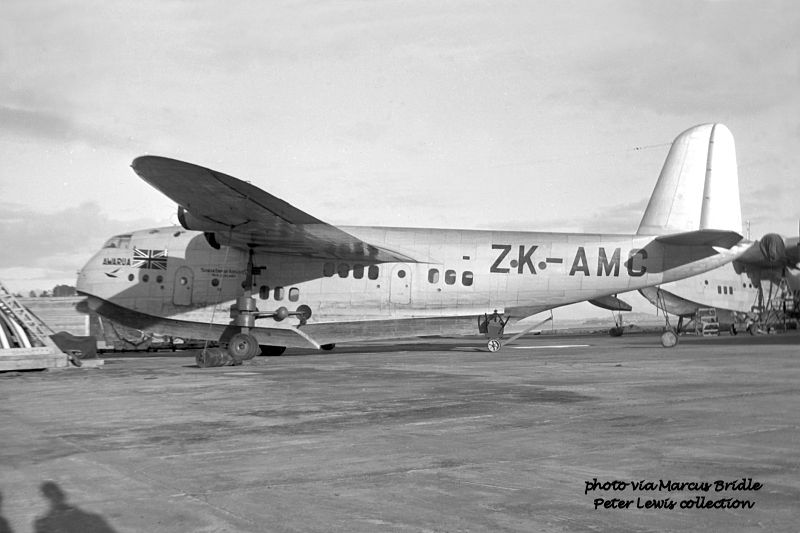
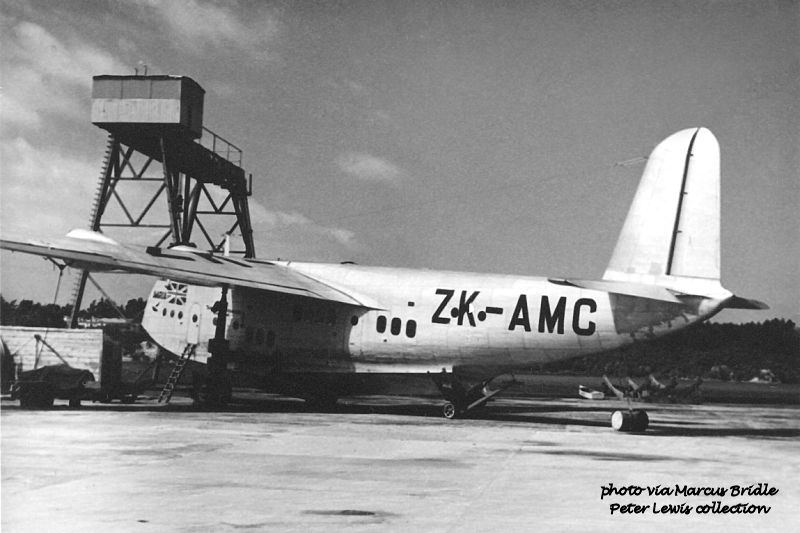
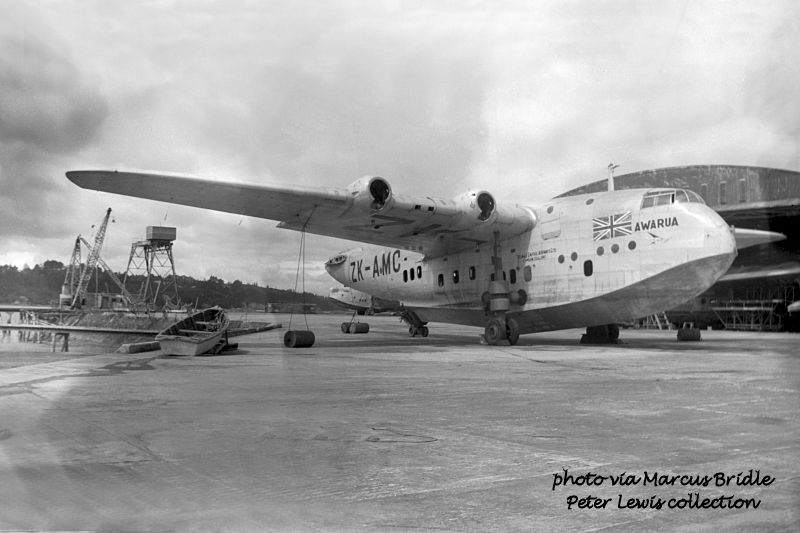
 What you might call "A Surfeit of Shorts" at Hobsonville at that time, ZK-AMC is on the left
What you might call "A Surfeit of Shorts" at Hobsonville at that time, ZK-AMC is on the left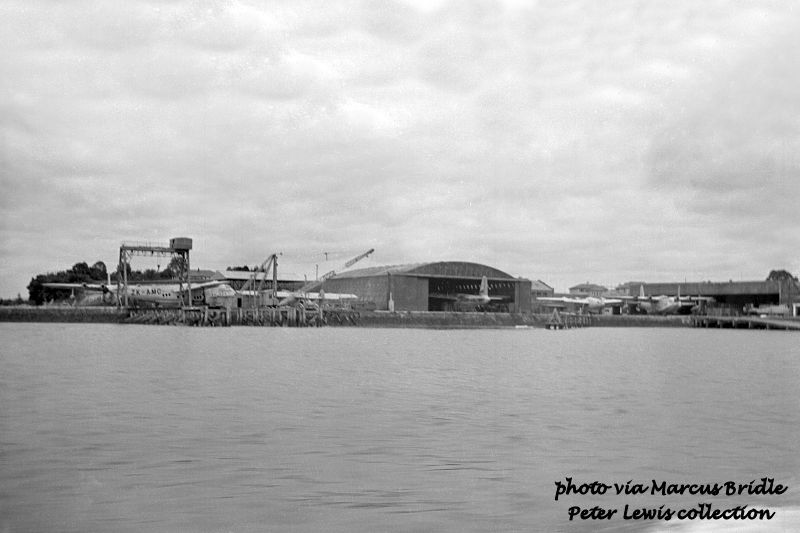
Sold by tender closing 21Jun48. Bought by the same entrepreneurs who later bought ZK-AMA, ZK-AMC was towed down the Auckland harbor to the mudflats at the industrial area of Panmure, beached there, and broken up for scrap by Dermott and Linn scrapmerchants of Onehunga later in 1948.
The scrapmen play
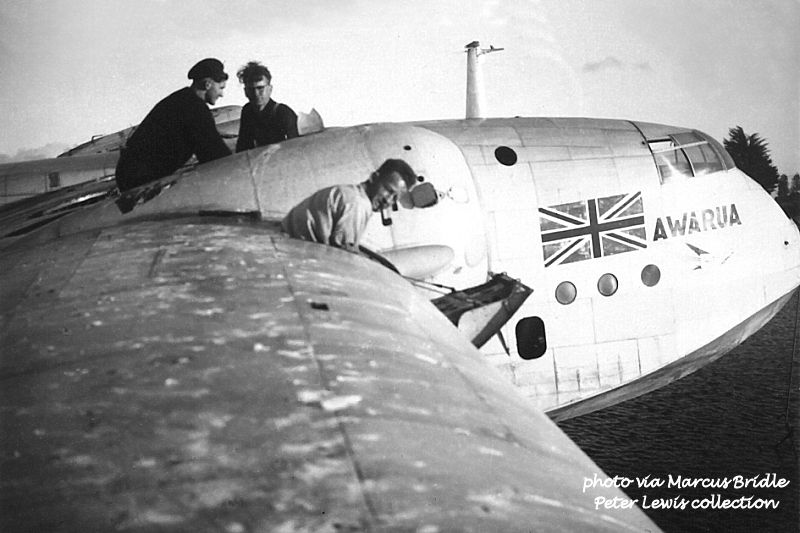 Very close to the end, now
Very close to the end, now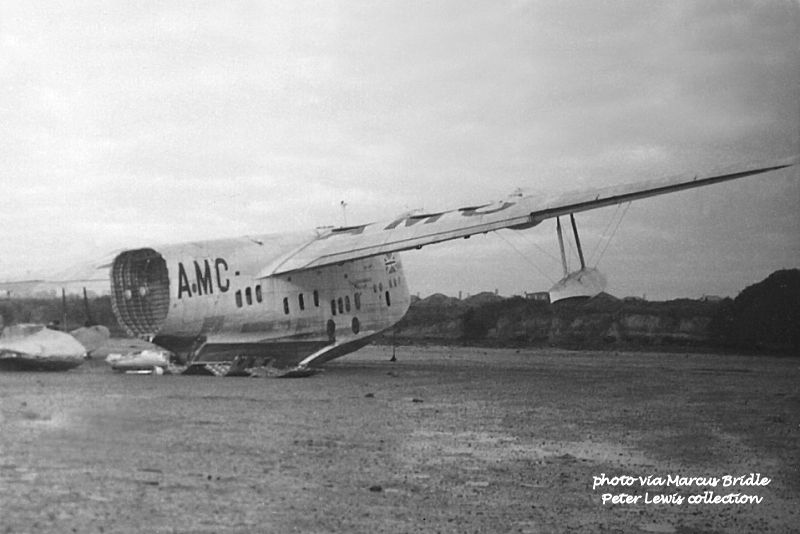
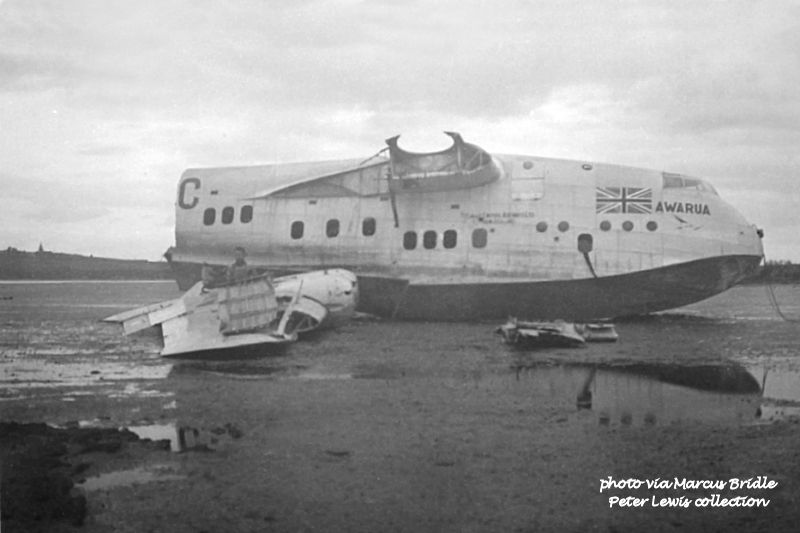
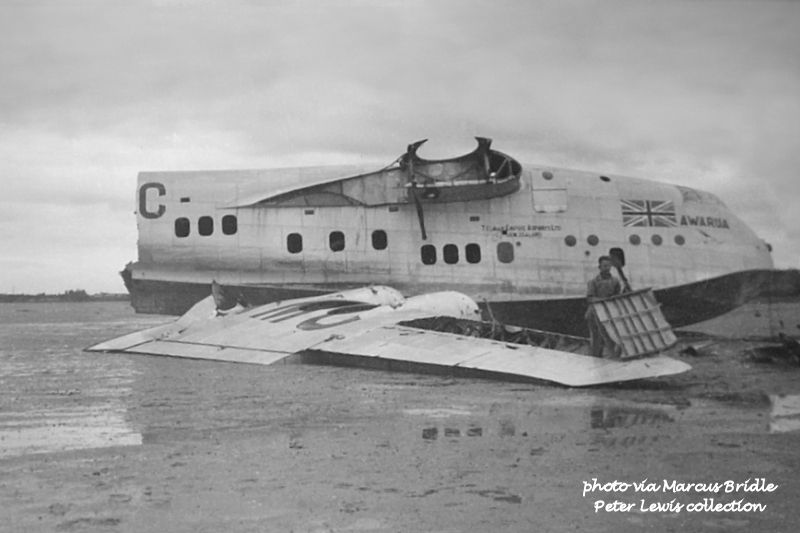
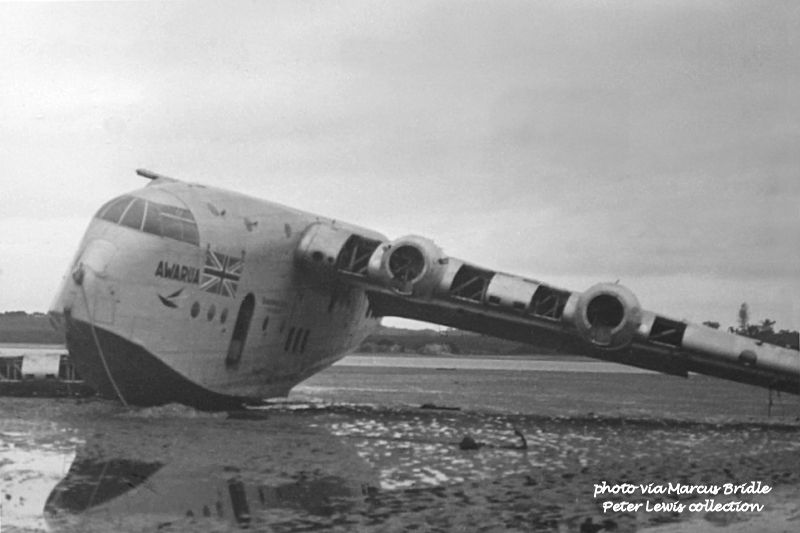
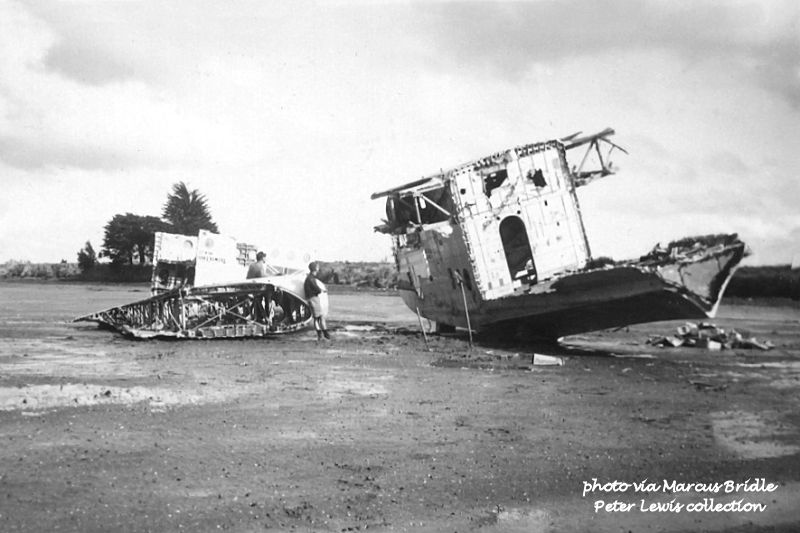 next: ZK-AMB
next: ZK-AMB


